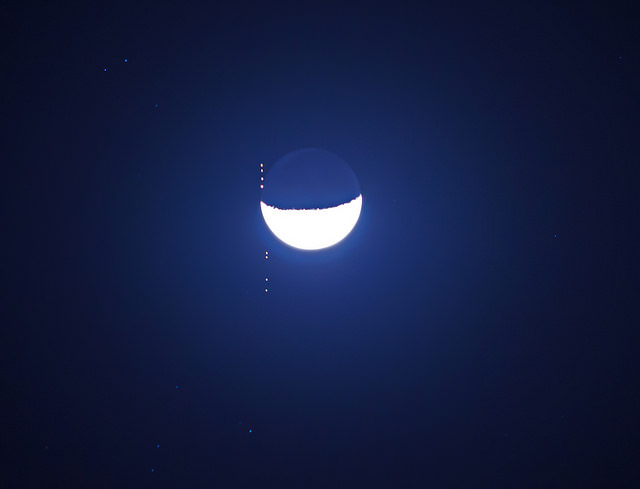So, did you miss yesterday’s occultation of Venus by the Moon? It was a tough one, to be sure, as the footpath for the event crossed Europe and Asia in the daytime. Watch that Moon, though, as it crosses back into the evening sky later this week, and occults (passes in front of) the bright star Aldebaran for eastern North America and, for Hawaii-based observers, actually covers the brightest of the asteroids, 4 Vesta.
These events are all part of a cycle of occultations spanning 2016.
When we left off last week, the Moon was headed towards New, which occurs today at 11:25 UT, marking the start of lunation 1154. We did indeed manage to spy Venus juuuust off of the limb of the razor thin Moon from our current base camp in Jimena de la Frontera Spain at sunrise, less than 29 hours from New. Observers based in Hawaii should be able to spot the waxing crescent Moon without optical aid on the evening of April 7th, and North America and Europe will see the Moon return to the evening skies on the next evening at 32 and 38 hours old, respectively.
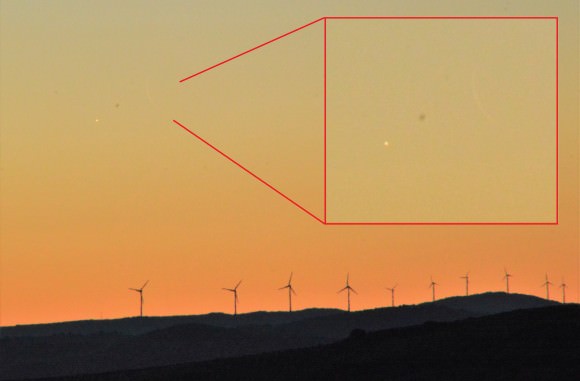
Follow that Moon
First stop: the Moon occults 4 Vesta for observers based in Hawaii at dusk, centered on 3:42 Universal Time (UT) on April 9th. The Moon is 4% illuminated, while 4 Vesta shines at magnitude +8. Notably, Vesta can reach magnitude +5, and is the only asteroid visible to the naked eye under dark skies as it nears opposition, as next occurs on January 18th, 2017. If you haven’t laid eyes on Vesta before with binoculars or a telescope, this weekend is a good time to try, using the nearby Moon as a guide. North America will see a close two degree pass on the same evening.
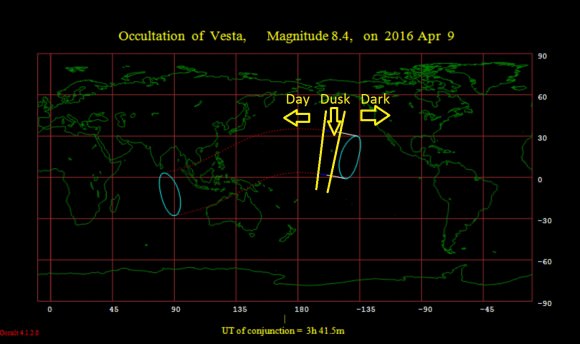
Key times for the event, in UT:
Honolulu
Ingress: 4:46 UT
Moon altitude: 24 degrees
Sunset: 4:48 UT
Next up, the Moon crosses the Hyades star cluster and meets Aldebaran on the evening of April 10th. This is the 4th occultation of Aldebaran of 13 by the Moon for 2016, and the 17th of 49 for the current cycle, running from January 2015 to September 2018. Aldebaran is the bright star that is most frequently visited by our Moon in the current epoch. The Moon can also occult Regulus, Spica and Antares, and the 18.6 year motion of its nodes as it intersects the ecliptic causes these cycles of occultations to change accordingly.
Easternmost Newfoundland will see the occultation transpire under dark skies, while the United States Eastern seaboard and the Canadian Maritimes will see the event under dusk skies. If you live west of this, do not despair. We’ve been able to easily spy Aldebaran in daytime skies, using binoculars and the nearby crescent Moon as a guide.
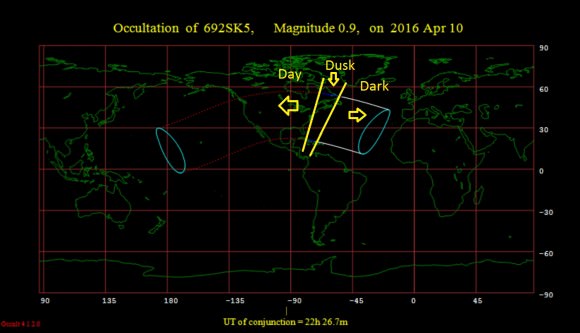
Here’s some key times for selected cities:
Gander, Newfoundland
Ingress: 23:13 UT
Moon altitude: 29 degrees
Sunset: 22:23 UT
Atlanta, Georgia
Ingress: 22:35 UT
Moon altitude: 62 degrees
Sunset: 00:05 UT
Boston, Massachusetts
Ingress: 22:53 UT
Moon altitude: 45 degrees
Sunset: 23:20 UT
Chicago, Illinois
Ingress: 22:25 UT
Moon altitude: 60 degrees
Sunset: 00:27 UT
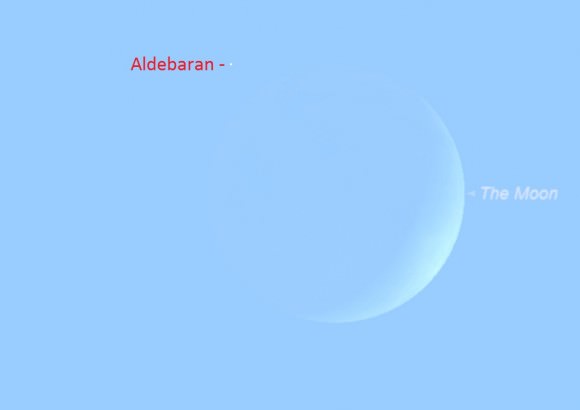
Catching such an event is unforgettable, as a star winks abruptly out of existence along the dark leading edge of the waxing Moon. What you’re seeing is mainly a product of the motion of the Moon itself around the Earth.
The next occultation Aldebaran favors northwestern North America on May 19th, 2016, and the next occultation of a planet (Jupiter) by the Moon occurs on July 9th favoring the southern Indian Ocean region. And remember, even if you’re located outside of the ‘occultation zone,’ you can still witness a close pass Aldebaran and the Moon, as our large natural satellite carouses through the Hyades and occults numerous fainter stars for observers worldwide.
Why occultations? Well, lots can be discerned about both bodies during such an event. Remember, New Horizons used radio occultations as it flew through the ‘shadows’ of Charon and Pluto last summer, in an effort to measure its atmosphere. Likewise, the high-flying SOFIA observatory used an occultation of a star by Pluto to make backup confirming observations from Earth. A grazing occultation of a star by the Moon can help map the lunar limb, and an occultation of a star by an asteroid can actually help measure the rock’s size and shape. Unlike many astronomical events, occultations are quick enough to make great Vines or gifs, and Aldebaran is bright enough to capture with a tripod mounted video camera zoomed in on the Moon.
As always, let us know what you see, and send those pics and vids in to Universe Today!

